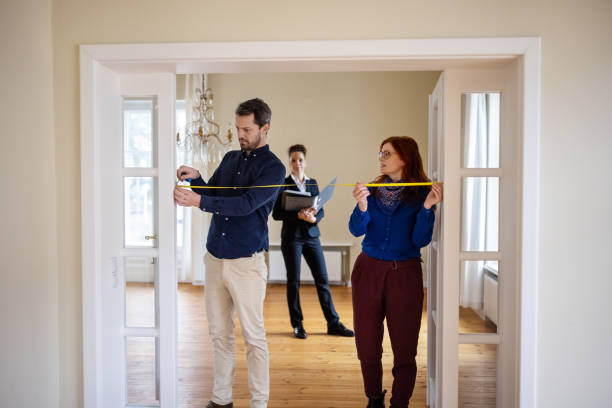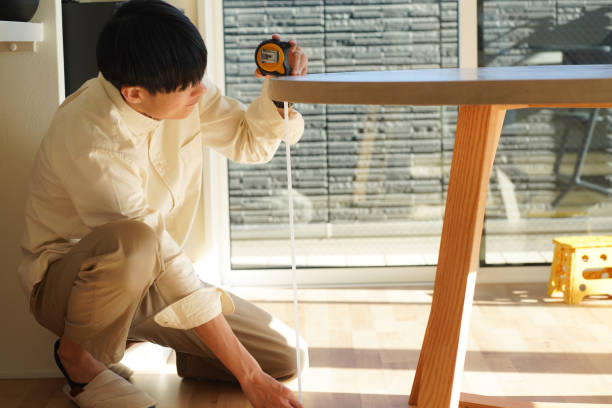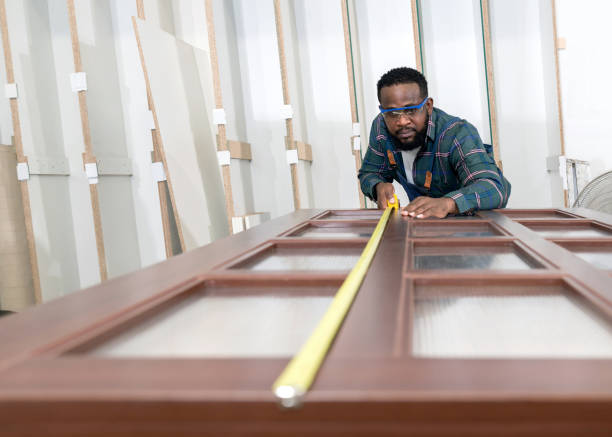My shopping cart
Your cart is currently empty.
Continue Shopping
Accurate measurements are crucial to ensure a proper fit when it comes to replacing or installing interior doors. Measuring interior doors may seem daunting, but with a systematic approach, it can be straightforward. In this article, we will guide you through the process of measuring for interior doors, covering essential steps such as determining the size of the rough opening and the door opening, measuring the width and height of rough openings, accounting for obstructions, considering installation space, calculating exact measurements, customizing doors if needed, and exploring online resources for additional guidance.
Before measuring, determine the size of the interior door opening you need to fill. This involves identifying where the door will be installed, whether it's a front door slab, the doorway between rooms, the back door sitting closet entrance, or any other intended location.
Using a tape measure, measure the door opening width from the inside edge of one side jamb to the inside edge of the opposite door jamb. Take measurements at the opening's top, middle, and bottom to account for any variations. Measure the opening height from the floor to the top of the closest door edge to the opening. Again, take measurements on both sides and in the middle to ensure accuracy.

While measuring, take note of any obstructions that may interfere with a standard-sized door. This can include trim, baseboards, entry doors, molding, or any other protruding elements that give door height or may affect the door's swing or installation.
You'll also need to consider the room layout where your door will be installed. This includes checking available space between the top of the door and other nearby elements, such as walls, furniture, or other doors. Also, check for sufficient space, just the door, for an ample swing area.
If the doorframe is close to a push-and-pull handle on an adjacent wall, for example, ensure there is enough clearance between the door handles to open and close without incident. It may also be beneficial to accurately assess the condition of the doorway's frame and door to determine if any repairs or replacements are necessary before measuring.
Before finalizing your interior door slab measurements, however, consider the type of flooring you have and any wall or ceiling coverings that may need to be cut to accommodate a door. These factors must be considered when determining precise measurements for an interior door.
Once you have taken all the necessary measurements, it's time to calculate exactly how large your doors need to be. This can include adding the measurement of any obstructions, as well as taking into account the standard thickness of wall coverings, fire doors, and flooring. If you plan on customizing your door, add those measurements accordingly.
In addition to the actual door size, consider the space needed for installation. Account for clearance for the door hinges themselves, door hardware, and any other components of the old door that may require additional room. This will ensure the door can open and close smoothly without obstructions. When installing equipment or appliances in your home, one important consideration is the space needed.
This can vary greatly depending on the item being installed, so it's important to research and understand the specific requirements for each one. For example, a large refrigerator may need several inches of clearance on all sides for proper ventilation and maximum efficiency. On the other hand, a smaller device, like a window air conditioning unit, may only require a few inches of space around the perimeter.
To calculate the exact measurements you need for an interior door, subtract a small amount from the width the door opens and the height measurements. This will provide the necessary clearance for proper installation and allow the door to swing freely without scraping against the door frame or flooring. A 1/2-inch deduction from the door width and height measurements is typically sufficient.
If your measurements fall outside of standard door sizes or if you have unique requirements, consider customizing your doors to ensure a perfect fit. Many door manufacturers offer customization options, allowing you to order doors with precise measurements, door thickness, special designs, or unique features to the perfect door to meet your specific needs.

Interior door measurement can vary depending on the specific circumstances and door types. Online resources can be invaluable if you require more detailed instructions on three measurements or encounter complex situations. Many reputable door manufacturers and home improvement websites provide comprehensive guides, videos, and tutorials that offer step-by-step instructions and helpful tips for measuring interior doors accurately.
Accurate measurements are essential when it comes to ordering and installing interior doors from My City Doors. Following the steps outlined in this guide, you can confidently measure interior doors and ensure a proper fit in your space. Remember to determine the size of the door opening, also measure the door by width and height, account for obstructions, consider installation space, calculate exact measurements, consider customization if necessary, and consult My City Doors and their online resources for additional guidance. With precise measurements in hand, you can confidently order the perfect interior doors from our store, knowing that they will fit perfectly and enhance the functionality and aesthetics of your space.
While it may be tempting to use the existing door as a reference, it's best to measure the new door before opening the replacement door itself. Over time, door frames may shift or settle, resulting in inaccurate measurements if you rely solely on the existing door.
To ensure smooth operation, it's recommended to have at least 1/8 to 1/4 inch clearance around the left side of the door for hinges and hardware. However, check the manufacturer's recommendations or consult a professional for specific requirements.
It may be necessary to order custom slab doors for irregular-shaped door openings, such as arched or rounded openings. Working with a professional door supplier or carpenter can help you find solutions for irregular slab door openings.
Installing interior doors can be a DIY project if you have the necessary skills and tools. If you need clarification or if the size door or project involves complex modifications, it's recommended to consult a professional carpenter or contractor to ensure a proper and safe installation of replacement doors.